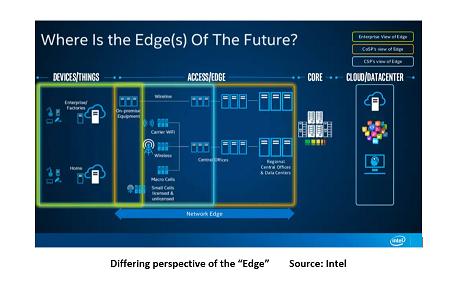Augmenting the “Edge”: Multi-access Edge Computing
By Chris Bastian
CTIO, SCTE
A growing trend in access network technology today is deploying Multi-access Edge Computing, or MEC. The trend requires a re-architecting of the network edge, with the objective of providing greater computing power closer to the customer.
Let’s break the phrase “multi-access edge computing” down into its components:
Multi-access
Historically, the cable industry has built its access technology predominantly on hybrid fiber coax, or HFC. More and more, access network connectivity provided to our customers comes in a variety of forms, including HFC, PON, Wi-Fi, and cellular, both LTE and 5G. Customers just want their services to work, wherever they are, regardless of access protocol, and ubiquitous across devices. The cable industry now has a flexible “playbook” to deploy different access protocols to support different customer wireline and wireless requirements.
Edge
Where exactly is the edge of the access network? Could it be at the hub site, the fiber node, the amplifier, the splitter, the access point into the home, or even the customer’s home gateway? This question frequently comes up in the telecom industry, with discussions ranging from the architectural to the operational. As the below figure from Intel illustrates, defining the edge depends on the perspective of the provider. A business or enterprise is likely to view the edge as their on-premise equipment. A wireline network operator may define their edge as the piece of active network equipment closest to the customer. A wireless network operator may define the edge as the cellular radio. With such a “soft” definition, it is important to specify your meaning of “edge” before you go too deeply into a service delivery discussion. MEC implementations utilize all of these locations, depending on the service.

Computing
Traditionally, the bulk of computing power in a cable network has been performed in a data center, head end, and/or hub site, miles away from the customer. With MEC, computation and memory are positioned much closer to the customer, considerably shortening the distance, and time, it takes to complete a service transaction, while also lessening the bandwidth needed to transport across the network.
When you put it all together as Multi-Access Edge Computing, you get a trend that leverages one of the greatest strengths that the cable network operator has: direct connections with millions of customers’ homes.
With MEC in place, the following benefits accrue to the network operators and their customers:
- Low latency—Many services, such as gaming, virtual reality, and financial transactions, require predictable and low latency. With MEC, the data remains closer to the customer, greatly reducing latency.
- Reduced traffic load on the core network—Many transactions can be addressed within the MEC node, without the need to traverse the core network.
- Increased analytics and security—Harnessing the processing power of the MEC node, service analytics and enhanced security are performed more efficiently close to the data flow origination.
- Convergence—With computing power at the edge, interworking across access protocols is supported.
- Decentralization—Via the MEC node, the network operator can deploy services to specific customers or groups of customers
- Open architecture/APIs—MEC has been developed based on standards and open interfaces, encouraging new and innovating companies to develop services.
All of the above factors contribute to faster introduction of new services, as well as better performance and availability to the customer.
SCTE has been hosting the Generic Access Platform (GAP) working group to define common interfaces within fiber node housings that support the convergence of wireline and wireless by accommodating DOCSIS, PON, Wi-Fi, 5G, and business services. The GAP architecture also supports MEC, with modules dedicated to processors and memory. GAP Standards will be available to the industry later this year. Visit www.scte.org/standards to learn more.
Multi-access edge computing will be one of many technical trends at this year’s SCTE Cable-Tec Expo® 2021, the largest annual cable telecommunications and technology tradeshow in the Americas. Building on last year’s success as a virtual event, this year’s attendees can take part in person in Atlanta or via livestream from October 11 to 14. Twenty-four papers will be presented on network edge topics, as well as over 100 other papers on topics such as workforce transformation, energy management and network security. Check out expo.scte.org to learn more.
Chris Bastian is the CTIO of SCTE, a subsidiary of CableLabs, and not-for-profit member organization driving the acceleration and deployment of cable technology. Chris spearheads SCTE’s award-winning Standards program, the only ANSI-accredited standards developing body in the industry. Prior to joining SCTE, Bastian spent 30 years at for-profit telecommunications enterprises, including 15 years in leadership roles at Comcast.